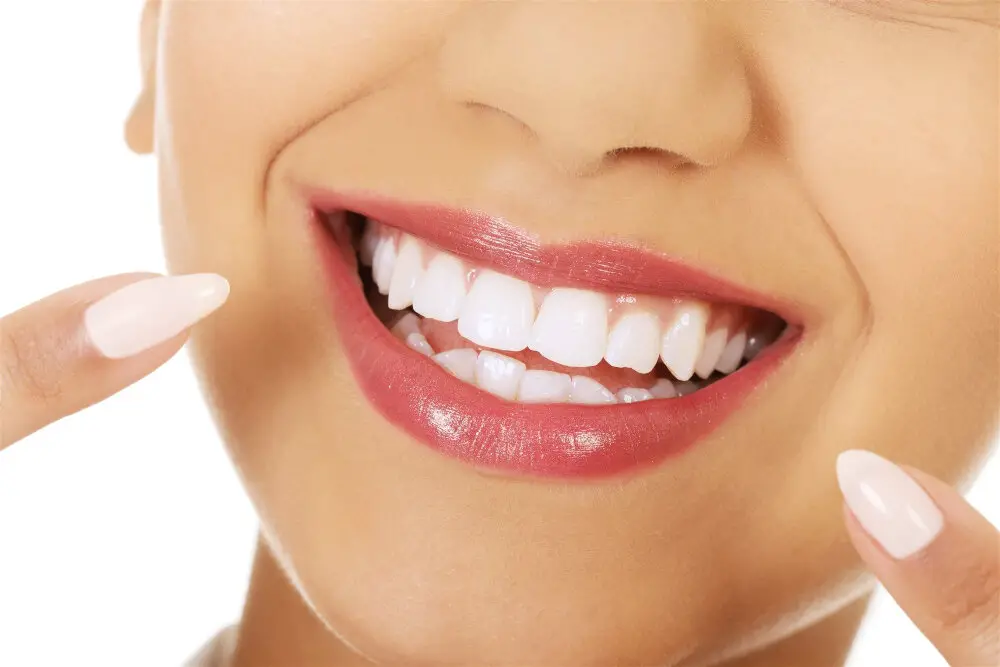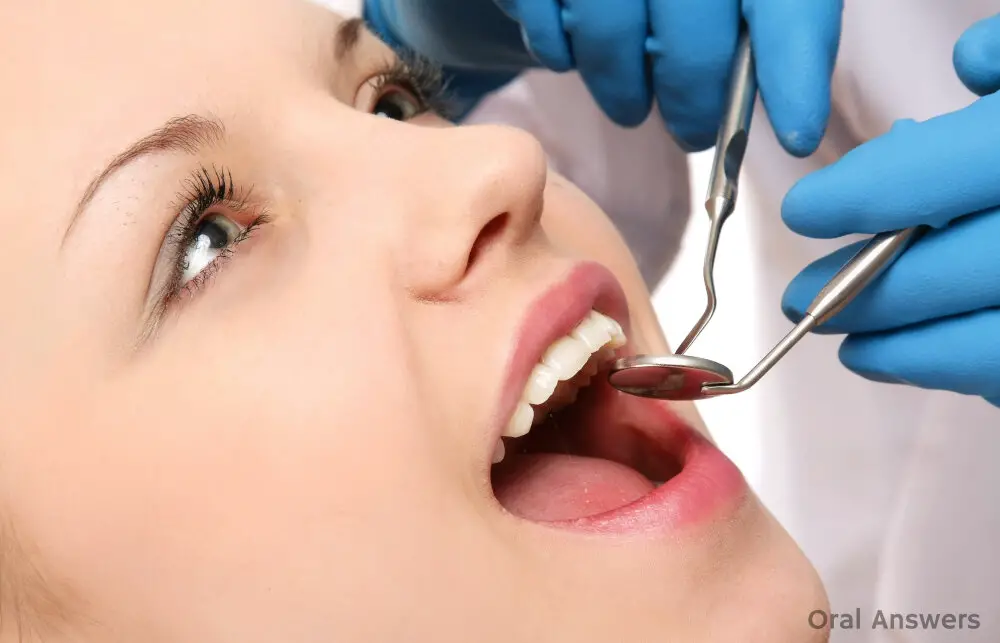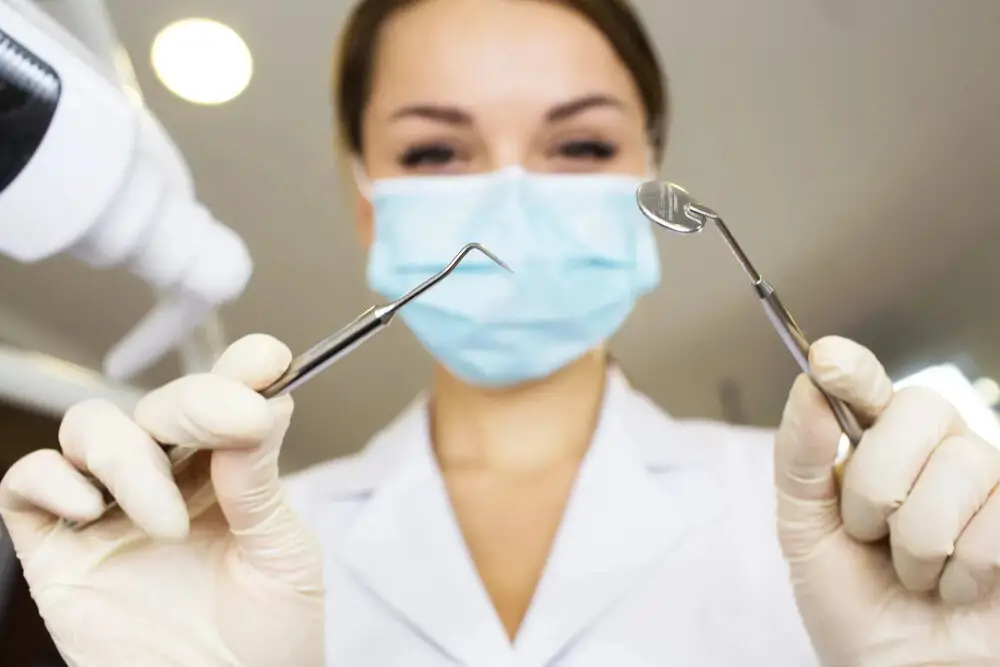Perfecting Your Smile: Understanding How Teeth Should Line Up

A beautiful smile is one of the most desired physical attributes for both men and women. A person’s smile is often the first thing that people notice about them, and it can leave a lasting impression. However, not everyone is born with a perfect smile. Misaligned teeth can make a person feel self-conscious, affect their confidence, and even impact their oral health. Understanding how teeth should line up is the first step in perfecting your smile, and it is essential to seek professional dental advice to achieve the best results. The alignment of teeth plays a crucial role in both the aesthetics and functionality of a person’s mouth. Proper tooth alignment ensures that the upper and lower teeth fit together correctly, allowing for efficient chewing and speaking. In addition, straight teeth are easier to clean and maintain, reducing the risk of dental problems such as cavities, gum disease, and tooth decay. Whether you are considering orthodontic treatment or simply want to improve your smile, understanding how teeth should line up is essential to achieving the best possible outcome.
A perfect smile is not only aesthetically pleasing, but it also has a significant impact on a person’s confidence and self-esteem. When a person has crooked or misaligned teeth, they may feel self-conscious and hesitant to smile or speak in public. This can lead to social anxiety and even depression. Furthermore, misaligned teeth can also cause functional problems such as difficulty chewing or speaking. Perfecting your smile is not just about vanity; it can improve your overall well-being and quality of life. With the help of orthodontic treatment, anyone can achieve a beautiful and healthy smile that they can be proud of.
A perfect smile is not just about having straight, white teeth. There are several other factors that contribute to a great smile, including proper alignment of teeth, gum health, facial symmetry, and the shape of your lips. The alignment of your teeth is crucial to a perfect smile, as crooked teeth can create an uneven appearance. Healthy gums are also important, as they provide a foundation for your teeth and support your facial structure. Facial symmetry is another vital factor, as an asymmetrical face can detract from an otherwise perfect smile. Finally, the shape of your lips can also contribute to a great smile, as a well-defined lip line can enhance the appearance of your teeth. All of these factors work together to create a perfect smile that is both aesthetically pleasing and healthy.
The Anatomy of a Perfect Smile

A perfect smile is not just about having white teeth, but also about how they are aligned and positioned. The anatomy of a perfect smile involves a combination of factors, including the shape and size of the teeth, the positioning of the teeth, the symmetry of the smile, and the alignment of the bite. A perfect smile should have teeth that are straight and evenly spaced, with a natural curve that follows the contour of the lips. The size and shape of the teeth should be proportionate to the face and complement the overall facial features. In addition to the appearance of the teeth, the perfect smile should also have a healthy bite. The alignment of the upper and lower teeth should be such that they fit together comfortably, without any overcrowding or gaps. An aligned bite not only improves the appearance of the smile but also helps to prevent dental issues such as tooth decay and gum disease. Overall, achieving a perfect smile involves a combination of good oral hygiene, regular dental visits, and, if necessary, orthodontic treatment to correct any alignment issues.
A perfect smile is a result of well-aligned teeth, healthy gums, and a balanced facial structure. The ideal smile should consist of straight, evenly spaced teeth with no gaps or overlapping, and a harmonious relationship between the upper and lower jaws. Additionally, the color of teeth should be white and evenly toned without any discoloration or stains. The gums should also be healthy, pink, and symmetrical, with no signs of inflammation or recession. The shape and size of teeth should be proportionate to the rest of the face, with no visible signs of wear or damage. Overall, a perfect smile depends on the balance and harmony between the teeth, gums, and facial features, creating a beautiful and confident smile.
Achieving the perfect smile is not just about having white and straight teeth, but also about the alignment of your teeth, gums, and lips. Proper alignment of teeth involves a harmonious balance between the size and shape of teeth, the position of the gums, and the shape and size of the lips. The ideal alignment for teeth is when the upper front teeth slightly overlap the lower front teeth, creating a straight line from the front view. The gums should be symmetrical and follow the contour of the teeth, while the lips should reveal just enough of the upper teeth when smiling, without being too wide or too narrow. It is crucial to have proper alignment as it not only enhances your appearance but also promotes good oral health, as it allows for easier cleaning and prevents tooth damage.
Common Dental Issues that Affect Smile Alignment

There are several dental issues that can negatively impact the alignment of your smile. One of the most common is crowding, which occurs when there is not enough space in the jaw for all of your teeth to fit properly. This can cause teeth to overlap or become crooked, making it difficult to keep them clean and increasing the risk of decay and gum disease. Crowding can be caused by a variety of factors, including genetics, a small jaw, or the loss of teeth. Orthodontic treatment, such as braces or clear aligners, can help to correct crowding and improve the alignment of your smile. Another common dental issue that can affect smile alignment is spacing. This occurs when there are gaps between teeth, which can be caused by missing teeth, small teeth, or a larger than average jaw. Spacing can make it difficult to chew and speak properly, and can also make you feel self-conscious about your smile. Orthodontic treatment can help to close gaps between teeth and create a more even smile. In some cases, cosmetic dental procedures such as bonding or veneers may also be recommended to improve the appearance of the teeth. By addressing these common dental issues, you can achieve a beautiful, healthy smile that you can be proud of.
There are several dental problems that can affect smile alignment, including crowding, spacing, and bite issues. Crowding occurs when there is not enough space in the mouth for all of the teeth, causing them to overlap or twist. Spacing, on the other hand, occurs when there is too much space between the teeth, creating gaps and an uneven appearance. Bite issues, such as overbite, underbite, and crossbite, occur when the upper and lower teeth do not meet properly, leading to discomfort, difficulty chewing, and even jaw pain. These dental problems can have a significant impact on the alignment of the teeth and the appearance of the smile, but there are a variety of treatment options available to help correct them and achieve a perfect smile.
Crooked, overcrowded, and missing teeth can have a significant impact on smile alignment. When teeth are crooked, they may overlap or twist in different directions, causing a misaligned appearance. Overcrowded teeth can appear cramped and cause some teeth to push forward, while others may appear to be recessed. Missing teeth can also have a significant effect on smile alignment by causing adjacent teeth to shift and change position, leading to gaps and an uneven smile. All of these issues can affect not only the appearance of the smile but also the overall health of the teeth and gums. Proper alignment is essential for maintaining good oral health and a beautiful smile.
Orthodontic Treatment for Smile Alignment

Orthodontic treatment is a branch of dentistry that focuses on correcting misaligned teeth and jaws. This treatment can help improve the appearance of your smile, as well as your oral health. Orthodontic treatment is typically recommended for children and teenagers, but adults can also benefit from it. The treatment involves the use of braces, aligners, or other appliances to gradually move the teeth into the correct position. The length of treatment varies depending on the severity of the misalignment and the type of appliance used. Braces are the most common orthodontic treatment and are made up of brackets that are bonded to the teeth and connected by wires. These wires apply pressure to the teeth, gradually moving them into the correct position. Braces can be made of metal, ceramic, or a combination of both. Invisalign is another popular option for orthodontic treatment. These clear aligners are custom-made for each patient and are virtually invisible. They are removable, making it easier to eat and brush your teeth. Orthodontic treatment not only improves the appearance of your smile but can also improve your bite, making it easier to chew and speak.
Orthodontic treatment options for smile alignment typically include braces, clear aligners, and retainers. Braces consist of metal or ceramic brackets that are glued to the teeth and connected with wires that apply pressure to gradually move the teeth into the desired position. Clear aligners are a more discreet option that involves wearing a series of clear plastic trays that are custom-made to fit over the teeth and gently shift them into place. Retainers are used after braces or clear aligners to maintain the new position of the teeth. Your orthodontist will evaluate your individual needs and preferences to determine which option is best for you. Regardless of the method chosen, orthodontic treatment can help improve not only the appearance of your smile, but also your oral health and overall well-being.
Dental braces and clear aligners are orthodontic treatments that can improve the alignment of teeth and enhance the overall appearance of a smile. Braces use brackets, wires, and rubber bands to apply gentle pressure to teeth, gradually shifting them into their correct position. Clear aligners are custom-made, removable trays that fit over teeth, gradually moving them into alignment without the use of wires or brackets. Other treatments such as retainers and palate expanders may also be used to correct alignment issues. By improving the alignment of teeth, these treatments can also improve a patient’s bite, making it easier to eat, speak, and maintain proper oral hygiene. Overall, orthodontic treatments can provide patients with a more confident and aesthetically pleasing smile.
Maintaining a Perfect Smile

Maintaining a perfect smile requires more than just brushing and flossing regularly. It involves a combination of proper dental care, healthy habits, and regular visits to the dentist. First and foremost, it is essential to brush your teeth twice a day, using a fluoride toothpaste to prevent cavities and keep your teeth clean. Flossing once a day is also crucial to remove plaque and food particles that get stuck between your teeth. You should also rinse your mouth with an antiseptic mouthwash to kill bacteria and freshen your breath. Healthy habits such as avoiding sugary and acidic foods and drinks can help prevent tooth decay and enamel erosion, which can lead to discoloration, sensitivity, and other dental problems. Drinking plenty of water can also help wash away food particles and reduce the risk of plaque buildup. Additionally, quitting smoking and limiting alcohol consumption can help prevent stains and other oral health issues. Lastly, regular dental checkups and cleanings are vital to maintaining a perfect smile. Your dentist can detect and treat any dental problems early on, preventing them from getting worse and affecting your teeth’ appearance and function.
Maintaining a perfect smile is not only aesthetically pleasing, but it also plays a crucial role in our overall health and well-being. A beautiful smile can boost our confidence, improve our social interactions, and enhance our professional image. It is also a sign of good oral health, as misaligned teeth can lead to various dental problems such as tooth decay, gum disease, and even tooth loss. A perfect smile can improve our speech, aid in digestion, and promote optimal jaw and facial structure. Therefore, investing in the maintenance of a perfect smile is not only a cosmetic concern but also a necessary step for our overall health and quality of life.
Maintaining good oral hygiene is essential to have a perfect smile. Brushing your teeth twice a day with fluoride toothpaste, flossing daily, and using mouthwash are the basic steps to keep your teeth healthy. Avoiding sugary food and drinks, as well as acidic foods, can help prevent tooth decay and erosion. Regular dental check-ups and cleanings are also crucial to detect any dental issues and prevent them from getting worse. Additionally, wearing a mouthguard when playing contact sports or grinding your teeth at night can protect your teeth from damage. By following these simple steps, you can have a perfect smile that will last a lifetime.
Understanding how teeth should line up is crucial for achieving a perfect smile. Teeth alignment affects not only the appearance of the smile but also the functionality of the mouth. Misaligned teeth can cause problems with biting, chewing, and speaking, as well as lead to more serious dental issues such as gum disease and tooth decay. Furthermore, an improper bite can result in jaw pain and headaches. By understanding how teeth should line up, individuals can take the necessary steps to correct any misalignments and improve their oral health and appearance. Whether through braces, Invisalign, or other dental treatments, achieving proper teeth alignment is well worth the investment in time and money.
Achieving and maintaining a perfect smile is a journey that requires patience and commitment. While there are many options available to improve the appearance of your teeth, it’s important to understand that a perfect smile is not just about aesthetics. Proper alignment and bite function are important factors in ensuring a healthy and functional smile. Regular dental check-ups, good oral hygiene, and a healthy diet are essential for maintaining optimal dental health. Additionally, it’s important to consider orthodontic treatment if your teeth are misaligned or if you have bite issues. With the right care and attention, you can achieve and maintain a perfect smile that is both healthy and beautiful.
Conclusion

In conclusion, having a perfect smile not only enhances your appearance but also boosts your confidence and self-esteem. Understanding how teeth should line up is crucial in achieving that perfect smile. Proper alignment of teeth ensures that they function properly, making it easier to chew, speak and maintain good oral hygiene. It also prevents dental problems such as tooth decay, gum disease, and jaw pain. By seeking the advice of a dental professional, you can determine the best treatment options to achieve a straighter, healthier, and more beautiful smile. Remember, a healthy smile is a happy smile, and investing in your dental health is an investment in your overall well-being.




